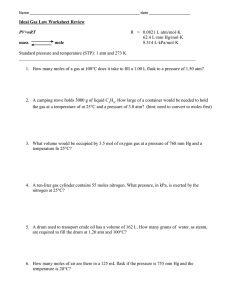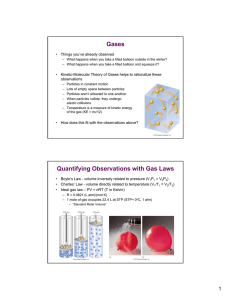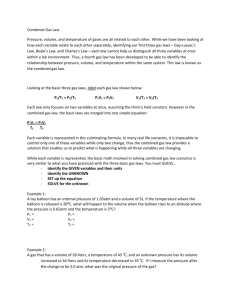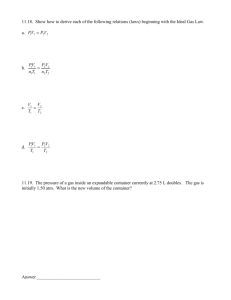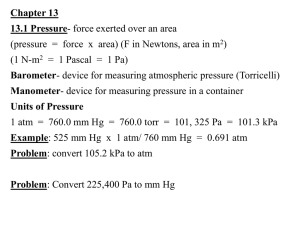AP CHEM NOTES: GAS LAWS
advertisement
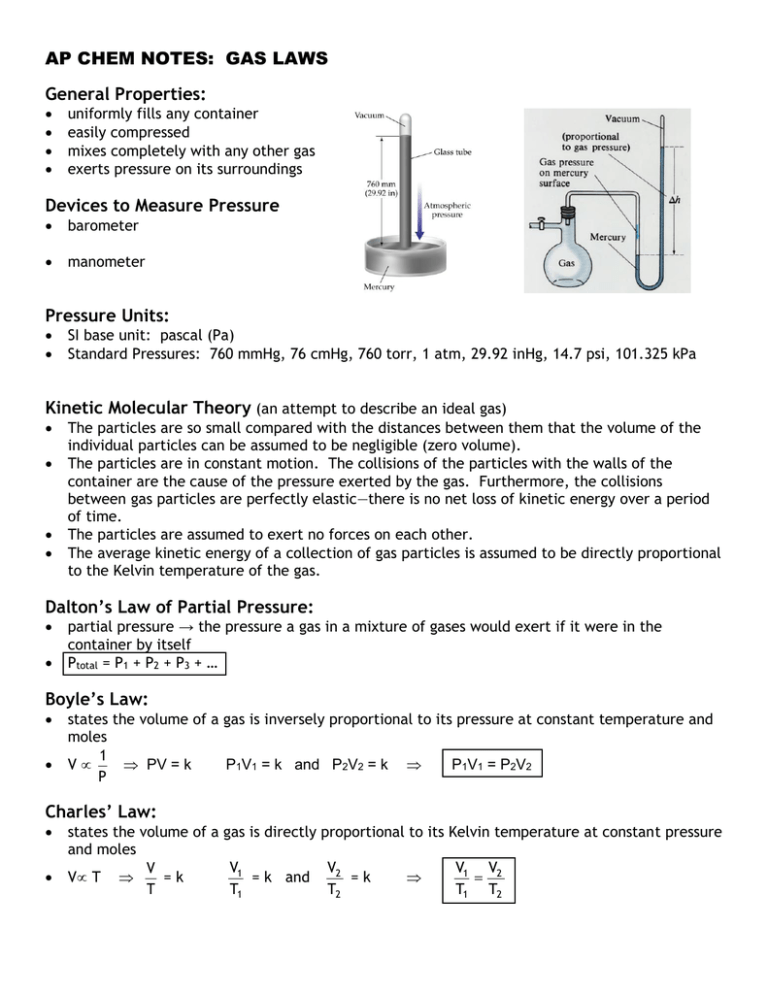
AP CHEM NOTES: GAS LAWS General Properties: uniformly fills any container easily compressed mixes completely with any other gas exerts pressure on its surroundings Devices to Measure Pressure barometer manometer Pressure Units: SI base unit: pascal (Pa) Standard Pressures: 760 mmHg, 76 cmHg, 760 torr, 1 atm, 29.92 inHg, 14.7 psi, 101.325 kPa Kinetic Molecular Theory (an attempt to describe an ideal gas) The particles are so small compared with the distances between them that the volume of the individual particles can be assumed to be negligible (zero volume). The particles are in constant motion. The collisions of the particles with the walls of the container are the cause of the pressure exerted by the gas. Furthermore, the collisions between gas particles are perfectly elastic—there is no net loss of kinetic energy over a period of time. The particles are assumed to exert no forces on each other. The average kinetic energy of a collection of gas particles is assumed to be directly proportional to the Kelvin temperature of the gas. Dalton’s Law of Partial Pressure: partial pressure → the pressure a gas in a mixture of gases would exert if it were in the container by itself Ptotal = P1 + P2 + P3 + … Boyle’s Law: states the volume of a gas is inversely proportional to its pressure at constant temperature and moles 1 V PV = k P1V1 = k and P2V2 = k P1V1 = P2V2 P Charles’ Law: states the volume of a gas is directly proportional to its Kelvin temperature at constant pressure and moles V1 V2 V1 V2 V V T =k = k and =k T T1 T2 T1 T2 Combined Gas Law: just as the name implies, this is a combination of both Boyle’s and Charles’ laws at constant moles P1V1 P2 V2 T PV V =k T P T1 T2 Ideal Gas Law: Since: V = k1 T VT V 1 P Vn PV = k2 V = k3 n L atm K mol Tn V = R P where R is the combined constants called the ideal gas law constant the value of R: R = 0.08206 ideal gas law equation → PV = nRT gRT g Since mol = , then another form of this equation could be: PV = MM MM This means that volume must be in L and pressure must be in atm. This equation is good anytime you know the variables needed at just one situation for a gas sample. Problem: Determine the volume of a 20.0 g sample of O2 gas at 745.0 torr and 127.0°C. V=? gRT PV = g = 20.0 g MM 1 atm = 0.9803 atm P = 745.0 torr L atm (20.0 g)(0.08206 K mol )(400 .2 K) gRT 760 tor r V= = = 20.9 L g T = 127.0°C = 400.2 K P(MM) (0.9803 atm)(32.00 mol ) STP: standard standard o standard temperature and pressure temperature → 0°C or 273.15 K to convert between K and °C K = °C + 273.15 pressures already given

